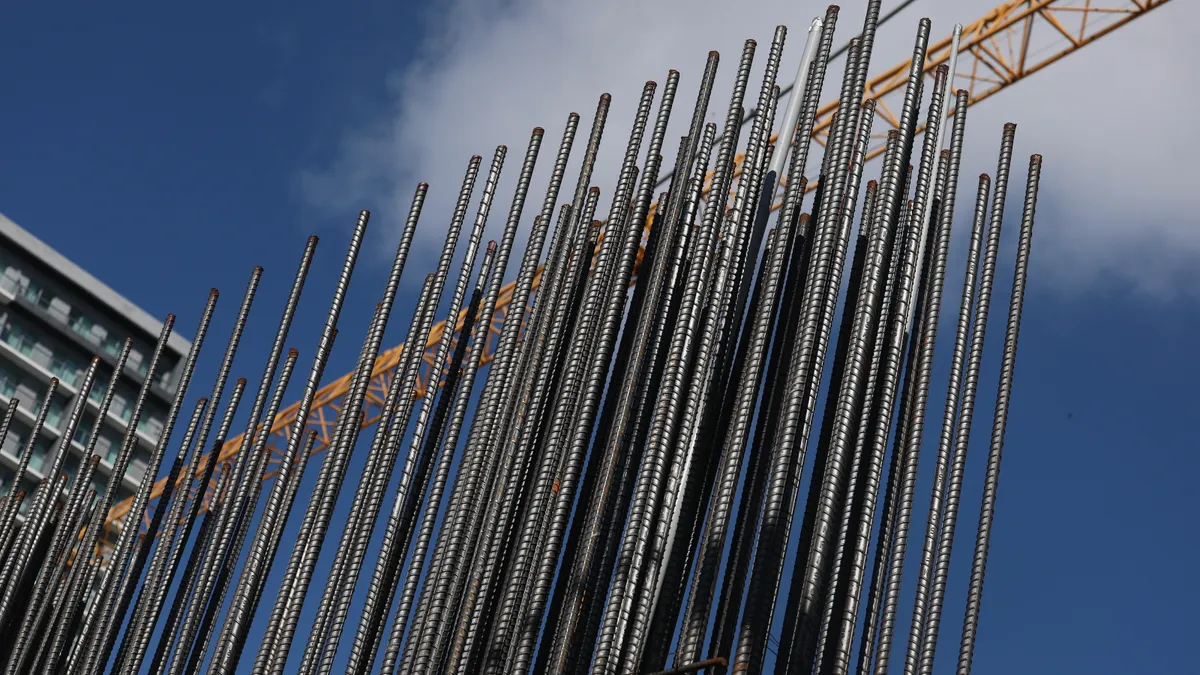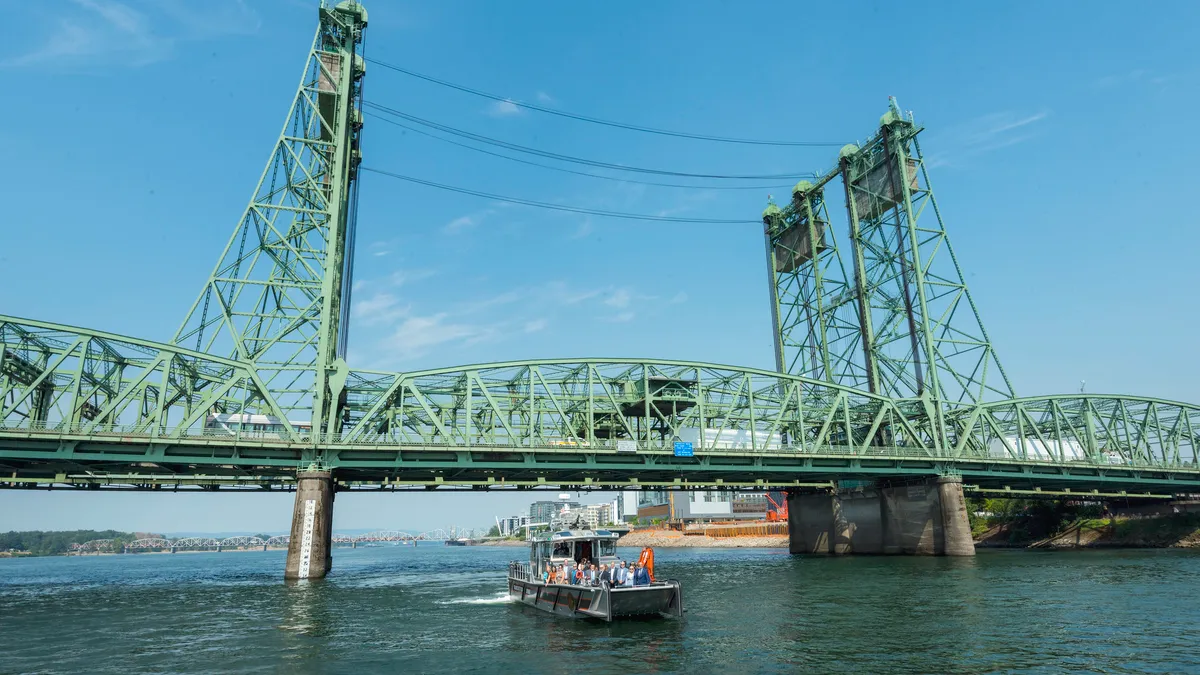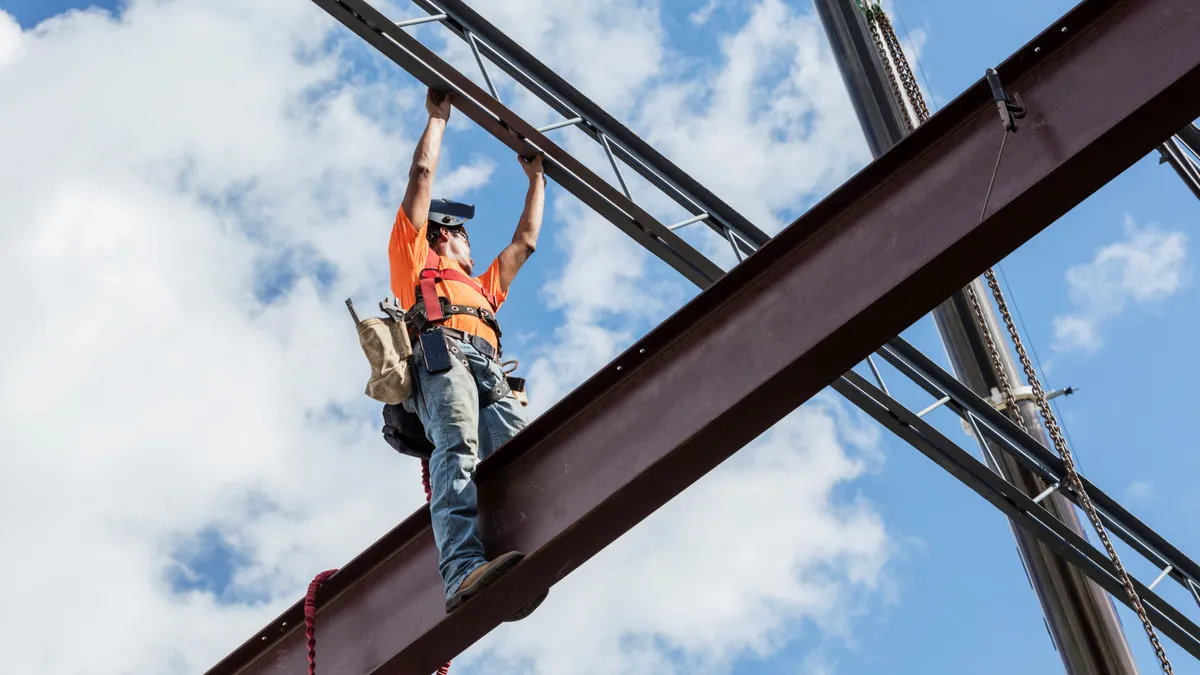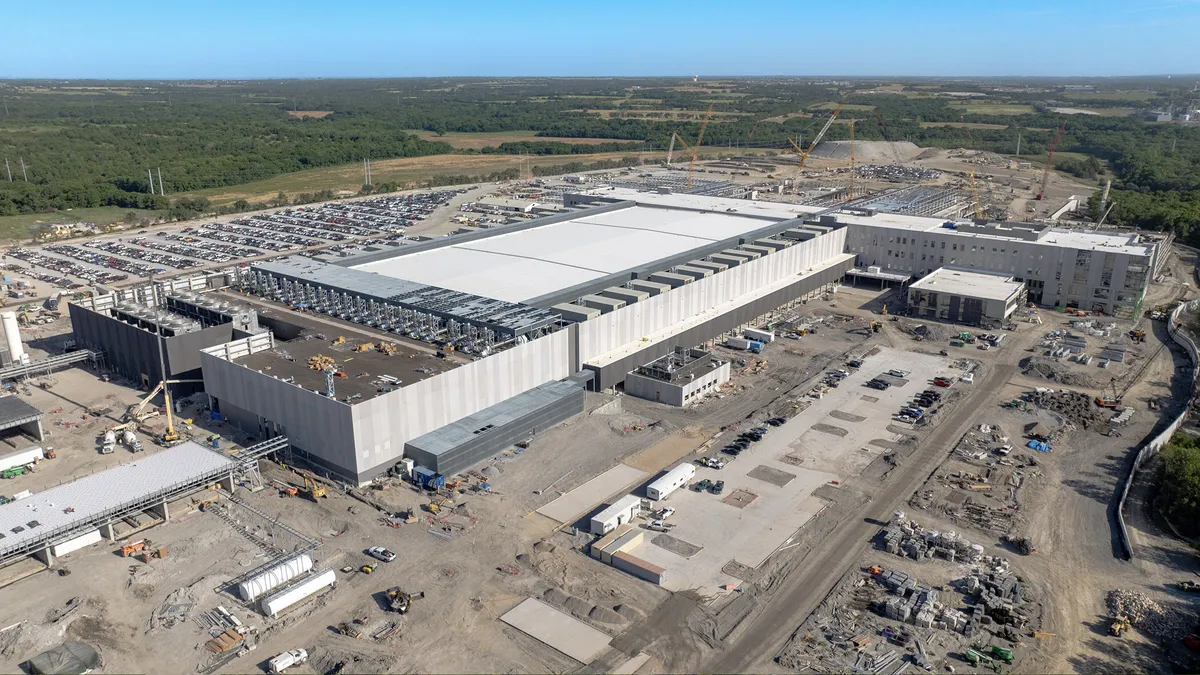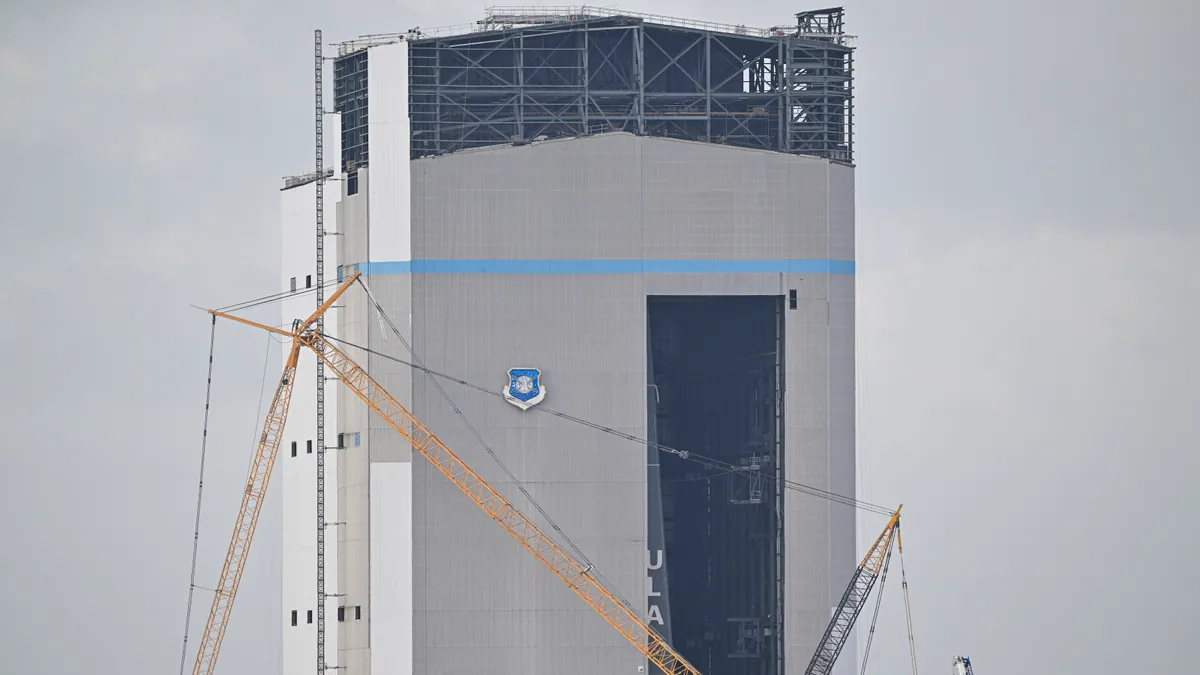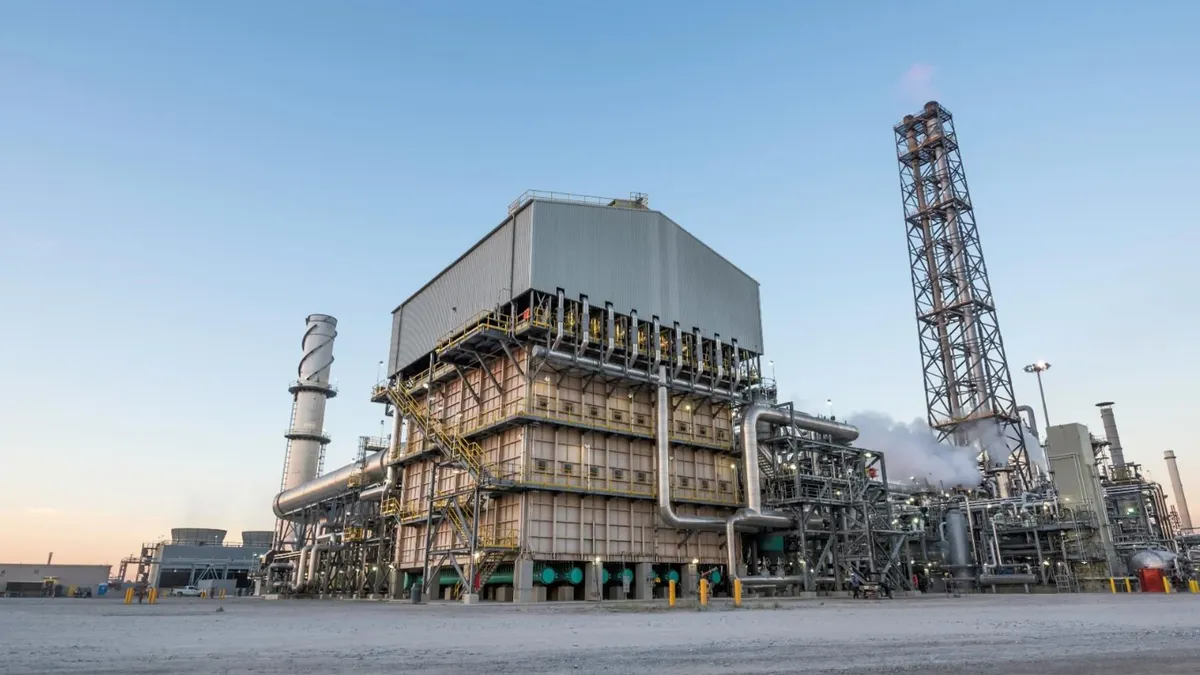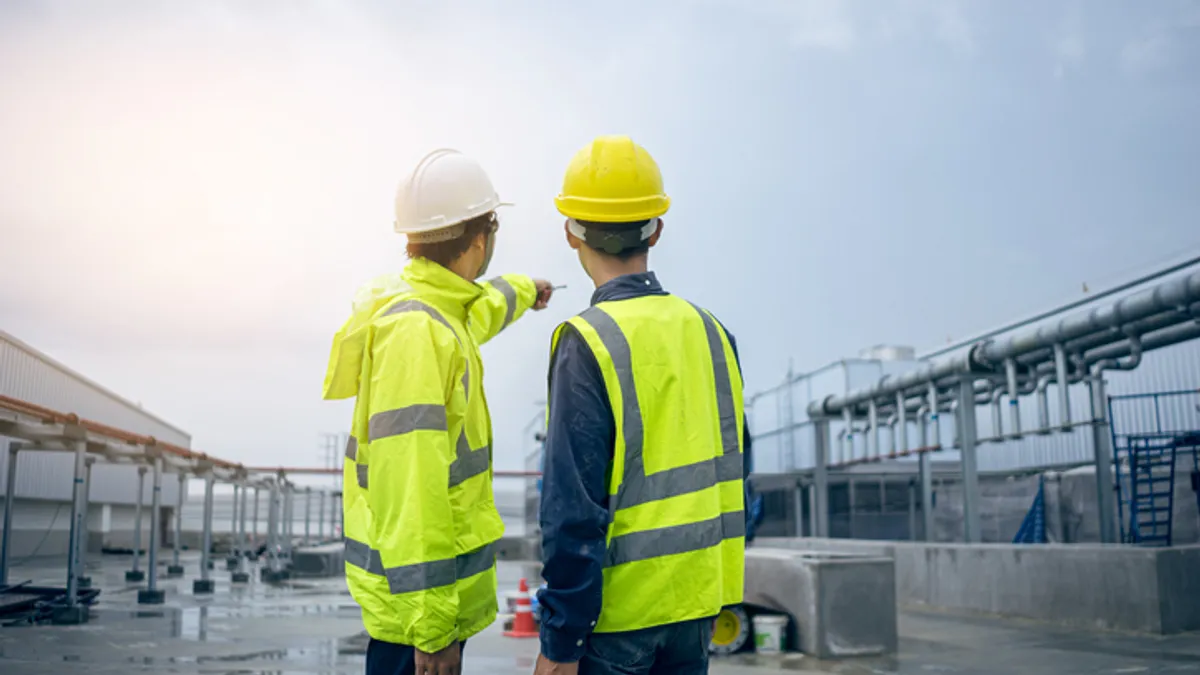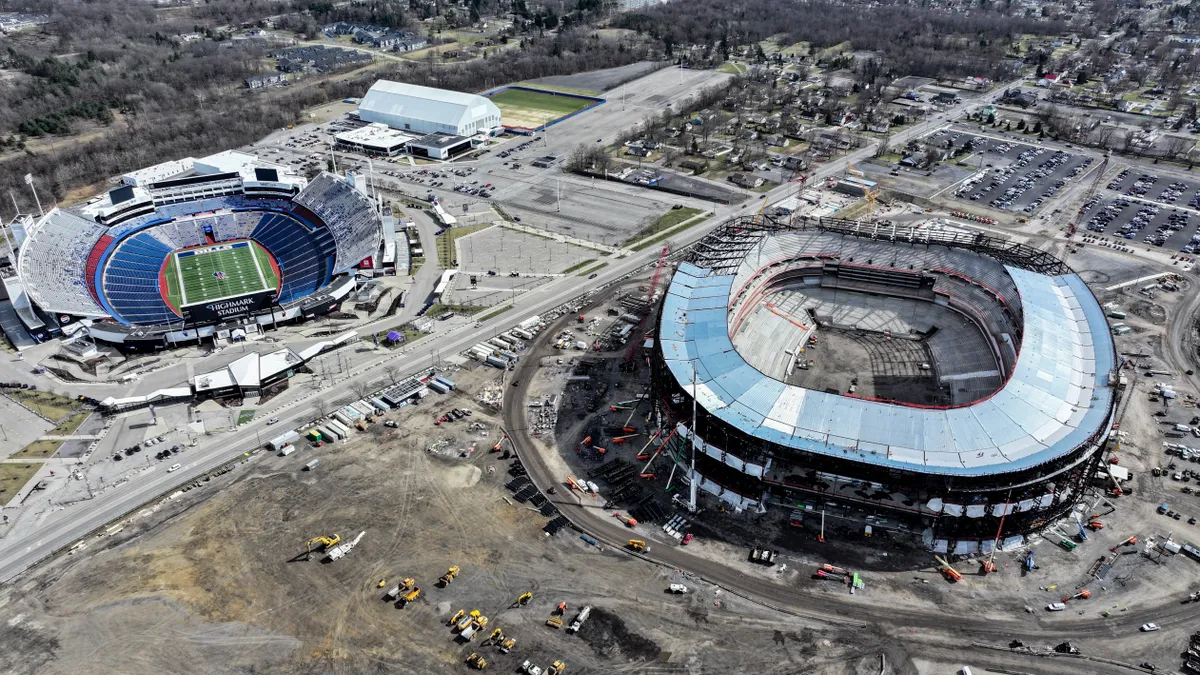Tariffs on steel and aluminum could do more than curb imports — they could put the brakes on construction activity, too.
President Donald Trump signed executive orders on Feb. 10 implementing 25% tariffs on all steel and aluminum imports into the U.S., effective March 12. The move could have a harmful effect on project momentum, market observers told Construction Dive.
Steel and aluminum are both fundamental components of construction materials, meaning price increases will likely ripple through the industry, said Scott Damiecki, partner and construction industry leader at New York City-based CohnReznick, an accounting, tax and advisory firm.
“Increased material costs will likely drive up overall cost of construction, which tends to decrease overall demand,” said Damiecki. “Sectors like commercial buildings, bridges and residential homes could be impacted. Data center work and manufacturing facilities may be insulated because of the sheer demand for those.”
The size and scope of a project will also determine how significantly it is affected by tariffs, said Brian Kassalen, principal and construction industry leader at Chicago-based Baker Tilly, an advisory, tax and assurance firm.
“The larger the project, the more impact tariffs could have,” said Kassalen. “For example, commercial buildings, multifamily buildings and government buildings in the planning stage are more likely to be impacted by tariffs, as opposed to a single-family home that’s going to be completed by summer.”
That type of price volatility could have an impact on project timelines, said Ron Ciotti, a construction attorney with Hinckley Allen, a Boston-based law firm.

“Many new projects will no longer pencil out, causing an overall reduction in the number of new projects,” said Ciotti. “Owners and developers will be concerned with delays due to supply chain disruption and product shortages, and being gun shy from having just dealt with those issues through the COVID years, will decide to put their projects on ice until there is more confidence in the flow of goods and materials.”
Passing on costs
Sam Giffin, principal product manager at Gordian, a construction cost data tracking firm, agrees these material price accelerations can lead to overall project slowdowns.
“On the margin, it is likely that increased steel and aluminum costs will push some projects into a delay decision, especially as we consider other economic variables at play,” said Giffin. “Decision makers are certainly watching sustained high interest rates and the threat of significant decreases to the construction labor pool as they make decisions about capital allocation.”
At the very least, tariffs will put additional pressure on construction project costs, said Giffin.
“Costs will likely increase from these higher material prices, and that will likely be passed on to consumers, or project owners via contractor bids,” said Giffin. “It’s hard to imagine a scenario in which these tariffs do not lead to another inorganic surge in market prices for steel construction material.”
When the Trump administration enacted steel tariffs in 2018, U.S. steel imports fell by 19% while overall steel consumption remained steady. That caused prices for benchmark steel materials to jump 14% in the first year, though it regressed slightly to 10% by the end of 2019, said Giffin.
The burden this time around will likely fall on the shoulders of the construction industry, said Kassalen.
“For that imported steel, the increased costs due to tariffs are expected to be passed directly onto construction projects,” said Kassalen. “The general expectation is that project costs will rise as a result of tariffs.”
Aluminum prices will likely increase as well, said Giffin. Kassalen expects those gains to be passed through to construction projects too, especially on the commercial side.
Impact on margins
Contractors are likely to feel the squeeze within months if the tariffs take effect in March, said Julie Workman, partner at Saul Ewing, a Philadelphia-based law firm.

“It’ll be relatively immediate,” said Workman. “Given that the tariffs are presumably going into effect within the next month, I think that those prices are going to start going up very quickly, certainly by the summer.”
For contracts already signed or in progress, absorbing the increased costs will cut into contractor margins, said Damiecki.
“Contracts that are signed or in-process did not factor in the cost of tariffs. Therefore, the increase in costs will most likely be absorbed by the contractor which will impact margins since the recovery of the additional costs is unlikely,” said Damiecki. “For future projects, contractors should review contract terms to incorporate price escalation clauses.”
Price hikes could come even sooner, said Ciotti. Indeed, construction input prices jumped 1.4% in January, marking the largest monthly increase in two years, according to the most recent analysis by Associated Builders and Contractors.
“In 2018, when President Trump initially threatened tariffs on steel and aluminum, the price of steel and aluminum immediately jumped, well before the tariffs were actually implemented,” said Ciotti. “Thus, if the old saying that history repeats itself is accurate, the industry will immediately begin to feel the cost impact.”
Some contractors with large stockpiles of material may be able to mitigate market pressure for a time, said Giffin. But that proactive approach will cause contractors as a whole to be quickly impacted by supply chain disruptions and product shortages, said Ciotti.
In other words, the construction industry will bear the brunt of tariff-related impacts, according to an S&P Global report.
“The downstream users of steel and aluminum, such as the construction and auto industries, will be affected disproportionately,” according to the report. The tariffs would increase costs to “construction projects including homebuilding, infrastructure and possibly defense contractors.”



